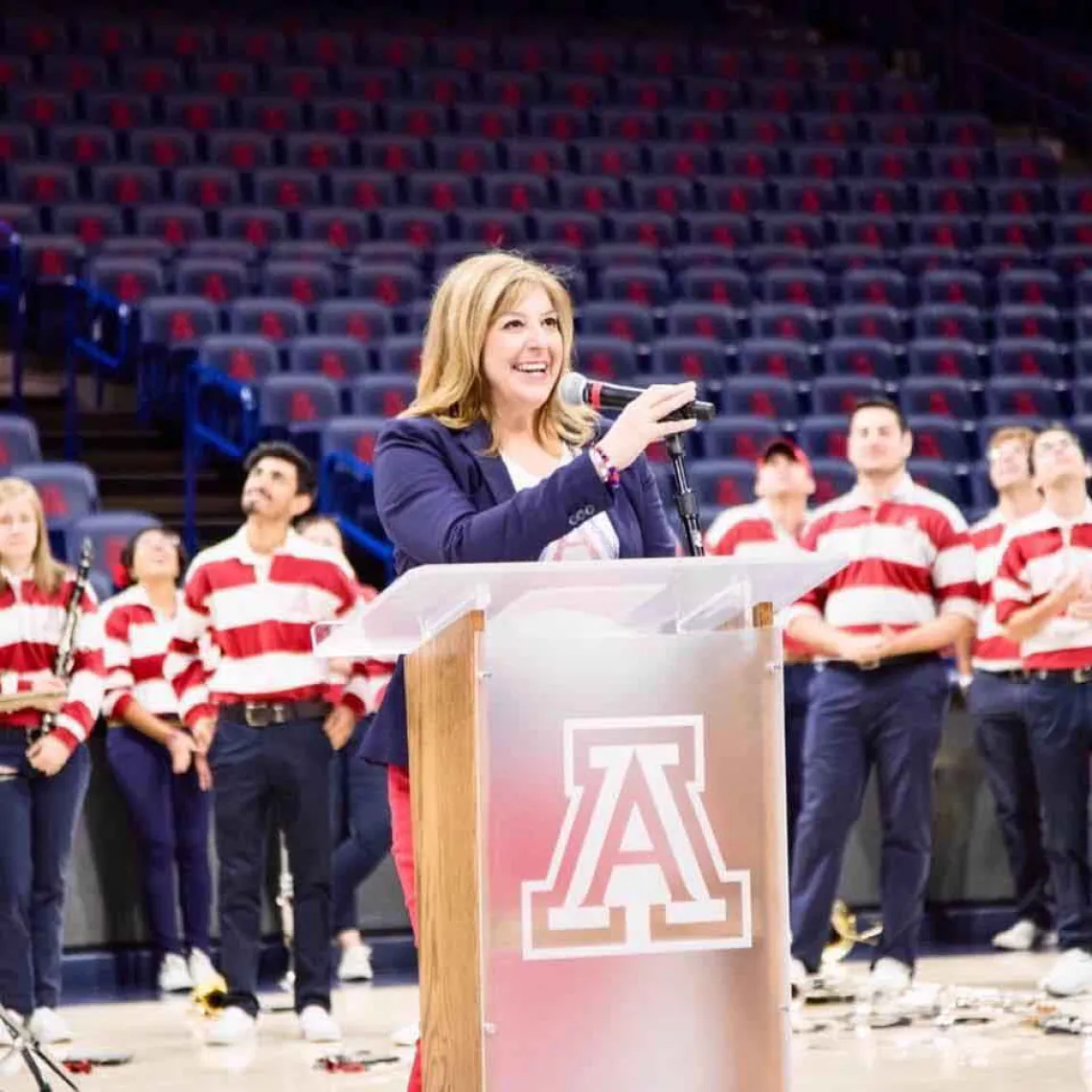Finding Tomorrow's Wildcats
A conversation with Dean Kasey Urquídez

Dean of undergraduate admissions Kasey Urquídez says that “cultivating diversity at a university benefits everyone."
Photos: Chris Richards
Kasey Urquídez ’94 ’02 — the University of Arizona’s chief enrollment officer, vice president for enrollment management and dean of undergraduate admissions — is a two-degree Wildcat who benefited from the New Start program as a first-generation undergraduate. While she originally planned to pursue a career in counseling, her on-campus job inspired her to focus on the impact she could make through higher education.
With the recent U.S. Supreme Court ruling on affirmative action, the country has looked for guidance to those universities that have increased rates of diversity on their campuses in recent years without affirmative action programs. UArizona has been chief among those institutions. Dean Urquídez sat down with us to talk about how the university cultivates diversity through outreach, resources for students and a strong commitment to Wildcat culture.
Q: How do you define diversity, and why is it important?
Diversity is bringing together people from all over the world with different cultural backgrounds, lifestyles, experiences and interests. It encompasses racial, ethnic and socioeconomic differences, but it’s much more than that. Diversity is important to learning and the growth of our students as well as the world we live and connect in. Cultivating diversity at a university benefits everyone by creating a more inclusive, enriching and intellectually stimulating environment. It prepares students for the challenges of navigating a global society, contributes to academic excellence and fosters a sense of belonging and equity across the campus community.
Q: From your perspective, what makes a great incoming class of students, and what goes into building that class each year?
We look for students who are a great fit as Wildcats. These are students who want to challenge themselves at an elite, global research university with faculty who genuinely care. Part of building the class involves trying to make a lot of smaller environments within our large environment, so that students have opportunities they wouldn’t have at a smaller school, but they can still connect with a sense of community.
Scholarships and financial aid are also a critical part of recruiting strong incoming cohorts. Removing financial barriers is a key part of recruiting talented students across all identity categories to the university.
Q: Looking at enrollment numbers, how has diversity at the university changed since 2010, when Arizona state law prohibited the consideration of race or ethnicity in university admissions?
In 2011, the incoming class of 7,300 students had 39% diversity — students who are nonwhite, in this case — which was actually still a large degree of diversity relative to other universities at that time. As of 2023, [the] almost 9,200 incoming students, a significant increase, had 49% diversity. We have also been a Hispanic-Serving Institution since 2018. This means that at least 25% of our students identify as Hispanic or Latinx. Right now, our student population is about 26% Hispanic or Latinx.
Q: What programs that support students who are minoritized and/or historically underserved are you most proud of?
The Arizona Assurance program offers approximately 100 Arizona residents from low-income families per year financial support for education and living expenses. It includes wraparound services through the Thrive Center. The Arizona Promise program is also noteworthy; it offers last-dollar funding that covers Pell Grant gaps for eligible students.
Another great resource is the Arizona Native Scholars Grant. This funding is available to Indigenous students from Arizona or one of Arizona’s 22 federally recognized tribes. It covers the gap between what the student is offered through their FAFSA [federal student aid] application and the cost of tuition and fees. One benefit that is unique to the way we implement this program is that any tribal aid the student receives is not included in that calculation.
Q: What is Destination Arizona, and how does it support minoritized students?
Destination Arizona goes beyond a regular orientation and is meant to offer “just in time” information to ensure our students are set up for success on their Wildcat journeys. We also try to help students begin to form a sense of belonging and to cultivate a culture of mutual respect. Concurrently, we offer a family conference, and we are sure to provide sessions and resources in Spanish. Overall, Destination Arizona programming provides students tools and resources they need to advocate for themselves, both academically and personally, with confidence.
Q: If we visited your office, what would we see?
You would see how committed we all are to the university and surrounding community. You would see us answering calls and personally reading applications — we had 56,000 first-year applications alone last year. And you wouldn’t see everyone, because so many folks in our office are doing outreach and recruitment in the community to make sure families understand that the university is within reach. Some people think we’re trying to figure out who we can deny, but the reality is that we’re trying to help students make their way to us, and we have a dedicated team that makes sure everyone has what they need to join the Wildcat family.


